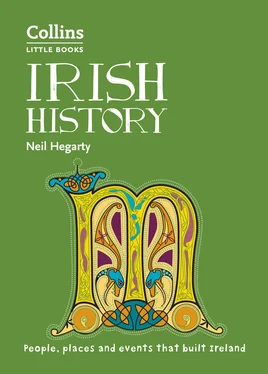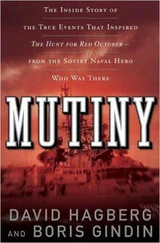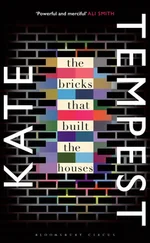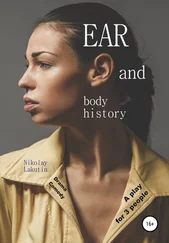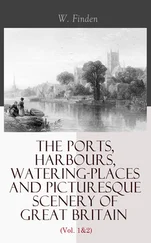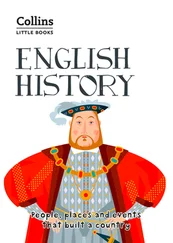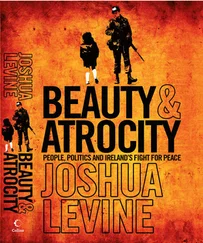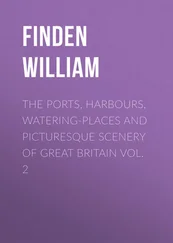Ireland is, in demographic terms, a young country, with an eye on the future: it has embraced modernity and is open to European and global influences. And yet, it remains a singular place, and mindful of the past. This Little Book illuminates many elements in this past and, in the process, it offers a reminder that, in understanding our history, we can also better understand our present world.
The human story of Ireland begins around 13,000 years ago, with the retreat of the glaciers that had covered the country during the Ice Age, followed by a slow rise in sea levels. Meadows and then scant woods of juniper and birch spread across the land, followed as the centuries passed by dense broadleaf forests. The land that became Ireland was possibly not yet an island, for land-bridges may have offered paths from Britain. However, it is clear that by 7000 BC human hunter-gatherers had crossed by land or sea to establish a permanent presence in Ireland, felling trees, spreading along the river valleys, and hewing out a livelihood amid populations of wolves, bears, boar, and smaller mammals. They dwelt in skin-roofed huts. Excavations of early settlements – on the banks of the river Bann at Mountsandel in County Derry, for example – reveal eloquent remains in the form of charcoal left by fires, flint worked into axe-heads, animal bones, and the ubiquitous shells of hazelnuts that were a mainstay of the Mesolithic diet. The population waxed and waned as the climate warmed and cooled: by 4000 BC, it is estimated that there were fewer than 10,000 people living in Ireland.
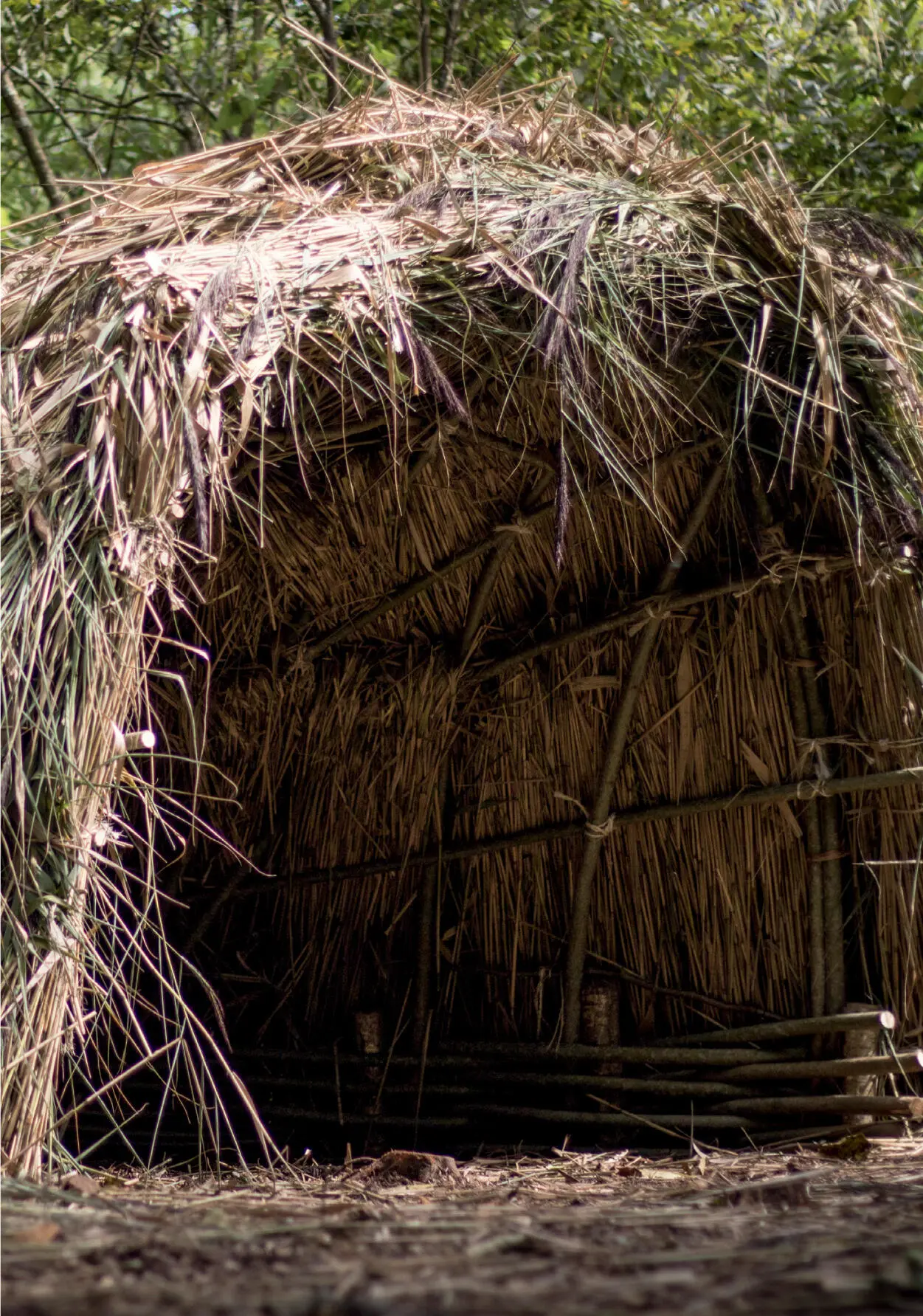
On the windswept sea cliffs of north County Mayo lie the Céide Fields: a hypnotizing jigsaw of tiny fields that date from the Neolithic period, which began c. 3500 BC. Exploration of the area commenced in the 1930s, when areas of the blanket bog covering the landscape was excavated, to reveal a tracery of stone walls – clearly the work of ancient hands. These fields and walls offered the first hard evidence for the existence of early farming in Ireland: indeed, the Céide Fields represent the oldest extant field systems to be found anywhere in the world. They demonstrate that the sparse population of hunter-gatherers that spread across Ireland during the Mesolithic period had now become agriculturalists. Possibly they crossed using a still surviving land-bridge between Britain and Ireland, or by sea in light skin boats, bringing with them domesticated flocks of sheep, goats, and cows. The dense ancient forests vanished, replaced by pasture, and by arable fields in which were sown primitive strains of barley and wheat. Larger and more established settlements developed, with more elaborate dwellings of wood, wattle and daub, and thatch.
In the fertile lowlands of County Meath rises the spectacular Neolithic site at Newgrange. This great monument was established c. 3200 BC, making it considerably more venerable than Stonehenge or the Pyramids, and it takes the form of a vast domed mound enclosing passages and inner chambers, with walls adorned by a range of carvings. Evidently, the structure was designed according to strict astronomical calculations: today, on the winter solstice, the first rays of the rising sun enter the mound and flood the innermost chamber with light. Newgrange is one element in Brú na Bóinne, a complex of Neolithic sites ranged along the Boyne river valley. These sites in turn are just some among many Neolithic monuments – such as the Poulnabrone dolmen in County Clare and Carrowmore in County Sligo – that still survive in Ireland. Each such site shares many similarities with other Neolithic monuments scattered across Europe, suggesting close connections between a range of dispersed civilizations. Newgrange is bound up with Irish myth but its essential function is still unknown. As such, it exemplified the ability of ancient humans in Ireland to leave lasting, remarkable, but essentially mysterious imprints on the landscape.
History and Myth: Cúchulainn
The great hero and warrior Cúchulainn is a central figure of ancient Irish mythology, and is particularly connected with the northern province of Ulster. In one of many versions of the story, he was conceived at Newgrange as the son and incarnation of the powerful god Lug and of Deichtine, daughter of the king of Ulster. Stories of Cúchulainn’s talents in love and war are legion: one such tale, that of the Cattle Raid of Cooley, sees the hero pitted against Medb (Maeve), the strong-willed and ambitious Queen of the western province of Connacht, whose armies invade Ulster to seize its prize stud bull. Cúchulainn wins the day by defeating one enemy warrior after another in single combat, in a display of might that lasts for many months. By turns capable of ferocious anger and of great gentleness and sensitivity, Cúchulainn has been invoked in support of a range of groups over the years. To Irish nationalists, for example, he stands for heroic independence, power, stamina, and ferocity in the face of adversity; equally, he has been claimed by unionists as a symbolic bulwark against invasion from the south.
Ireland is famously a ‘Celtic’ nation, sharing strong cultural and linguistic traits with other ‘Celtic’ societies in Scotland, Wales, Cornwall, Brittany, and the Isle of Man – but what does ‘Celtic’ actually mean? The term is a vexed one: it first entered common use during a period of rising nationalism in nineteenth-century Ireland and became a useful means to distinguish Irish culture from that of ‘Anglo-Saxon’ England. As for the facts, it was long claimed that Ireland was occupied by waves of Celtic invaders arriving from central Europe around 500 BC, who supplanted the existing culture that had developed in the course of the preceding centuries. In addition, legend speaks of a period in deepest antiquity, when the ‘Milesians’ sailed to Ireland from Iberia to do battle with the Tuatha dé Danaan, the existing inhabitants of the land. But recent research reveals no such invasion: instead, newcomers arrived steadily from across the sea, acclimatizing and adapting to life in an already populated land, and adding their experience to the cultural mix – but, crucially, not erasing the civilization that had gone before. ‘Celtic’, then, is a useful mark of cultural identity, rather than a concept rooted firmly in historical fact.
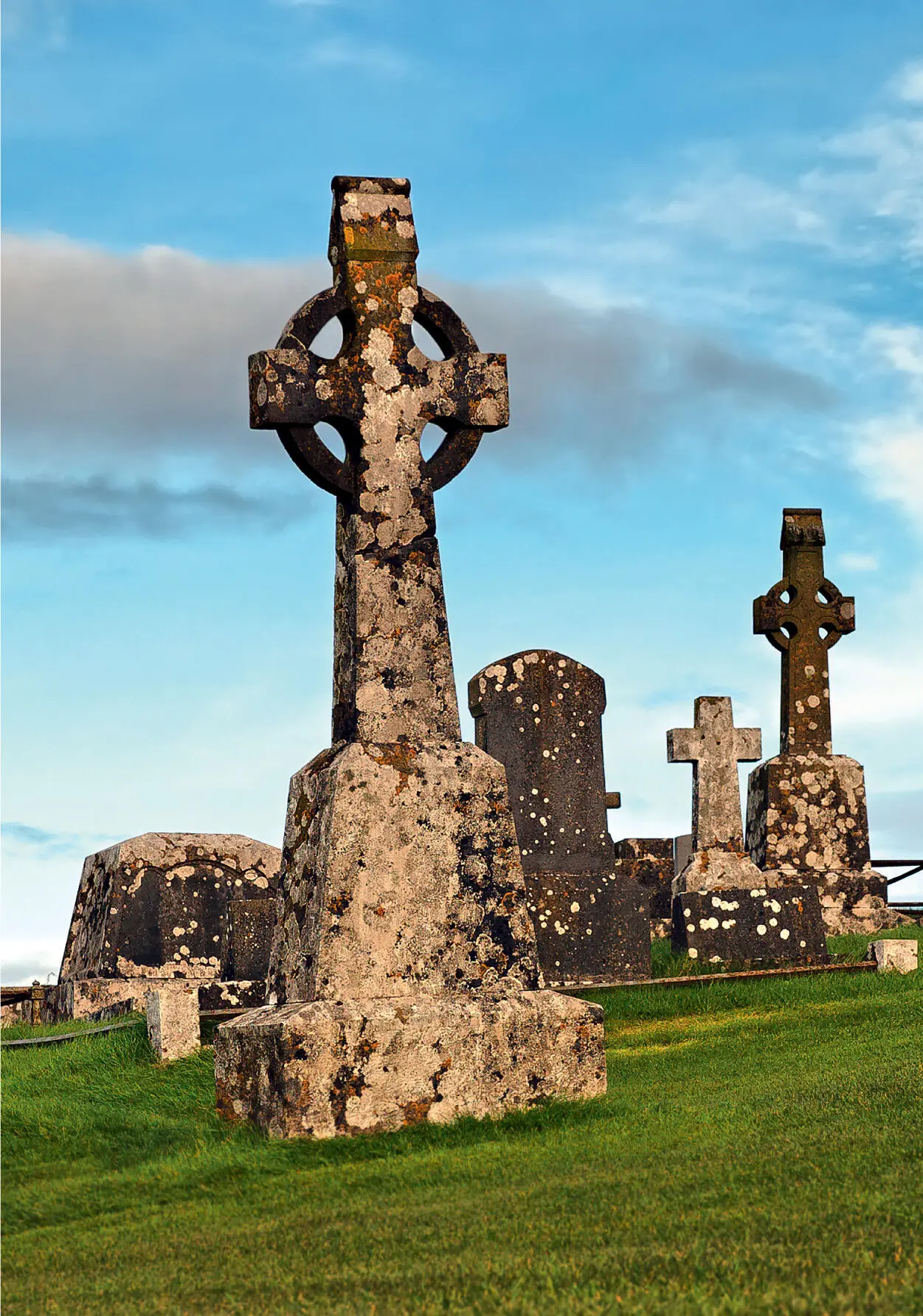
The great fortress of Dún Aonghasa lies on the sheer cliffs along the south coast of Inis Mór (Inishmore), the largest of the Aran Islands. It was memorably described by the Victorian archaeologist George Petrie as the ‘most magnificent barbaric monument extant in Europe’: it is indeed truly spectacular, and its setting against a panorama of ocean and sky adds to the drama. Dún Aonghasa takes the form of a series of concentric stone walls which end on the cliff edge: it is assumed these walls originally enclosed a circular space, but the remainder of the site has collapsed over the centuries into the Atlantic. The fortress was built and rebuilt over the aeons, but it is thought that the first stronghold on this site dates from approximately 1100 BC. Although much of its history is lost, one can surmise that the site grew in size and complexity over the years. For example, the so-called cheval de frise – the dense fields of jagged rocks placed deliberately around the site – demonstrates the importance of Dún Aonghasa as a place of defence, and speaks eloquently of an otherwise shadowed prehistory of war, attack, and defence scored onto the landscape of modern Ireland.
Читать дальше
